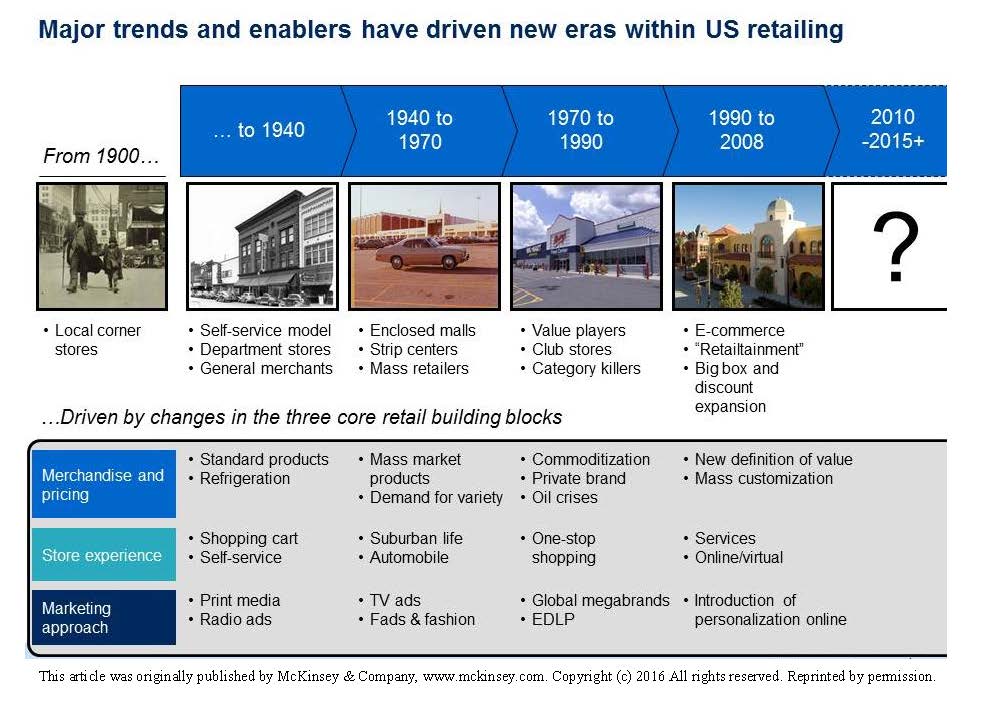With companies like Barnes and Noble closing over ten percent of its stores, along with big-box apparel conglomerate Macy’s shutting down over 100 of its (now defunct) inline and anchor locations, why aren’t other retailer shaking in their boots? What does this mean for the modern day retailer?
We are all to some degree, familiar with how the consumer purchasing environment is shaping up around us. The e-commerce sector is rapidly growing in correlation with the development of the good ol’ world wide web. Simply put, today’s consumer demands more than a quality product and a robust customer service strategy. It’s an arsenal of convenience, ease of access, and streamlined approaches…and here’s the thing. We’re entering a new age of consumer demand and preference. Not the least of which will experience a major overhaul in coming years. “Alright, but where exactly does this leave us in the here and now?”, you ask. Well..let’s talk about that.
But before we dive in, I’d be remiss if I didn’t mention that volumes of books could be written on mere subject points in this article This article is meant to serve as a foundation for the state of the retail world around us, as of November 2016.
Let’s take a trip down memory lane, or in the case of this millennial author’s experience, what he has gathered from his education in marketing: consumer behavior and experience as a new-wave consumer.
1900 – 1940 | At the turn of the twentieth century, the retail environment was a burgeoning industry. While goods and services were rather limited, corner stores anchored towns with their practicality and convenience.
1940 – 1970 | A shift occurred as technology and products began to saturate the marketplace. This is where the development of the great ol’ American shopping mall took off. Finally–a one-stop place where you could grab a gift, pick up your dry cleaning, and take a quick lunch. The lifestyle concept of suburbia flourished, especially post WWII, allowing our nation’s citizens to seek out comfort and convenience. Leaving no stone unturned, apparel and kitchen gadgets galore began to make their way in the American household.
1970 – 1990 | Value players, club stores, and category killers took off. Retailers began seeking more sophisticated models to position value within the marketplace (i.e: Costco, Walmart, Target).
1990 – 2008 | With the development of the internet, bringing the world and its ideas and communication was no longer a “bottleneck” in the human experience. E-commerce got its roots in this era, and paved the way for mobile technology and engagement.
2010 – | Hmm…the best way I could sum this era–aggressiveness. And by that I mean, the strategy that marketers and retailers have undertaken to reach out to, retain, and foster relationships with, their clientele. This is an age supersaturated with blips of info desperately fighting for our attention. According to Digital Marketing, “experts estimate that most Americans are exposed to [nearly] 10,000 advertisements each day.” It’s aggressive. This modern construct is not developed with malice…well, that’s another article… No. Instead, retailers have to be aggressive in order to keep up with consumer demand. And what we demand changes with each tic-tock of our life clock. Customization also gained major traction as companies reverse-engineered their products and placed focus on individual preference. Fushia and lime green Nike’s with gold star print? You got it. Demanded. Designed. Delivered.
“So…what’s to come, better, what must retailers do in order accommodate this shopping environment evolution?” To keep it short and sweet–bring online and offline experiences in one seamless hub. This experience, called “omnichannel”, embodies a diverse media–brick-and-mortar, e-commerce, mobile technology, and telephone to form a well-rounded strategy in keeping up with today’s trends. He or she who understands this, will best gear toward the developmental transition held inside and outside, brick-and-mortar.
Where does that leave us in the here and now, moreover our immediate future? According to Vend, a retail software management company, there is a forecast remedy for our retail re-positioning. Below are a few major trends that have taken hold in the shopping environment.
1 | More Payment Options | Mobile payments have added a layer of security and convenience in the world of payment-processing. It’s here to stay, and take off even further, with more stores adopting “sophisticated” POS terminals. With the advent of the Apple Watch buying that daily latte can be done with just a flick of the wrist–even if you look flat-out insane doing so.
2 | Development of Click-and-Collect | The shopping experience “click-and-collect” marks a value-add for consumers who want the convenience of online shopping from their smart device, coupled with the ‘try it in-store’ mentality that brick-and-mortar provides. Users can place an order on their smart device and then pick up their order in store, for a quick, yet personalized experience. Nordstrom, Kohl’s, and Sam’s Club have marked a jolt in this direction, with other retailers gaining a late-start to the game.
3 | Removal of Friction from the Shopping Experience | Friction isn’t the only thing that happens when atoms slip and slide past each other. In the retail world, it’a a collection of meta-events that have a negative impact on the shopping experience. Say you have a Starbucks gift card. The Starbucks app allows you to enter that gift card in the app and store it for later. In the past, losing a gift card meant you lost that balance, but now, you have it loaded up on your phone and ready to go. Friction…gone. Amazon has implemented the Dash Button, a button which allows for effortless reordering of a product with just a push of a button. Say goodbye to the chore of a one-item errand run.
4 | In-Store Mobile Devices | Mobile technology has added a new benefit layer to the shopping world. Mobile-savvy users know the power of scanning in store to learn more about and connect with the product in a meaningful way. Or…buy it cheaper somewhere else!
The shopping experience has changed dramatically since its inception–think old world bartering and bazaars and fast forward to our present-day omnichannel experience. While traditional brick-and-mortar currently undergoes a transformation, it’s here to stay. Owners of stores, buildings, and brands…hear my plea–times are a changin’, the market’s evolvin’, and the future of shopping is before us, and will continue to develop rapidly.
Alright, this writer’s heading to lunch…would you look at that, they accept Apple Pay.











